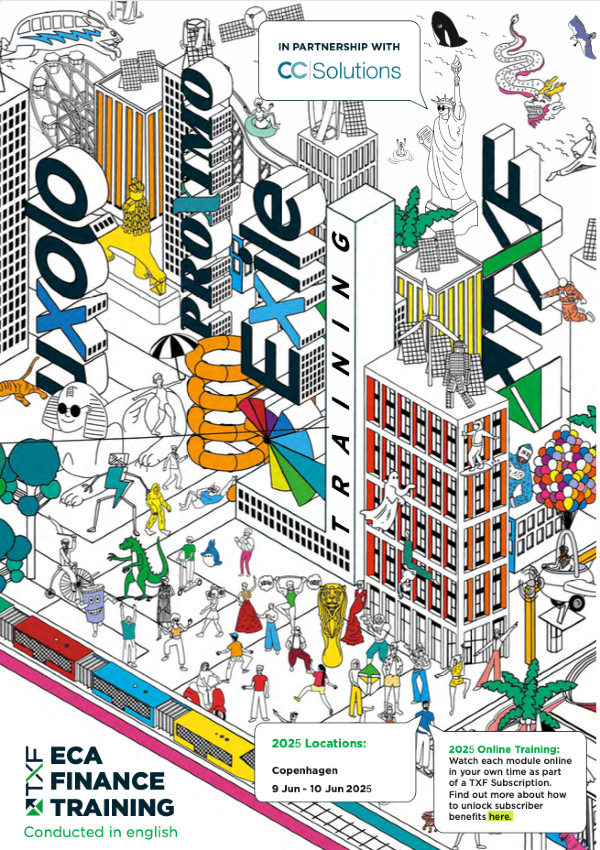Shop talk: Basel IV tests alternative funds in commodity finance
With banks having to implement the finalised version of Basel III (commonly called Basel IV) by 1 January 2022, regulatory requirements are becoming ever complex. TXF spoke to Fasil Nasim, co-founder of alternative fund Audentia Global, to discuss the implications of changing regulations on the commodity trade finance sector.

TXF: Are banks fully aware of the ramifications of Basel IV? And which banks are best prepared for the changes, the major banks or the smaller players?
Fasil Nasim (FN): Yes, at the board level they are. As a result of the recent implementation of Basel III, some banks have developed internal regulatory teams that look at capital issues across the entire institution. However, commercial front office staff are less aware of the ramifications of regulatory change.
Smaller trade finance-focused banks have a more streamlined approach to this and in turn have a broader understanding, but possibly not the resources to make the required changes.
TXF: If banks do nothing to mitigate the impact of Basel IV, what does that mean for the cost of capital?
FN: We believe banks will not have a choice in the matter and will have to act. Moving forward, large commercial banks will need to raise additional capital in order to do business as the new regulations demand.
In our opinion, the only three options banks have are to reduce their lines, to raise additional regulatory capital to support the increased requirement or to ask their clients to post more equity to support their financing lines.
TXF: What is the role of institutions like Audentia in terms of helping banks meet their Basel IV targets?
FN: Our role is to bring third party and investor capital into the asset class to support the increased capital burden trade finance banks are facing as a result of regulatory change. We focus on being a part of the financing of these bank transactions – harnessing external capital to distribute risk across the wider institutional investor base.
TXF: Post-Basel III we saw risk weight increase by roughly 15%, what do you expect the fallout to be post-Basel IV?
FN: The way Basel IV is written today, in simple terms, will require banks to raise a further $120 billion of additional capital if nothing is done to mitigate the impacts. This will also see return on equity drop by at least 0.6 percentage points across the sector. In the case of commodity trade finance, Basel IV more specifically precludes physical collateral such as commodities being used in regulatory risk-weighted asset (RWA) calculations.
This would have the effect of effectively increasing the RWA of trade finance portfolios to de-facto 100%. This would impact commodity trade finance portfolios significantly due to the increased economics of lending and the requirements of additional capital outlay. Even revolving credit facilities, where borrowing bases also rely on physical commodities as collateral, will also have to be re-calibrated from a regulatory capital standpoint. In short, Basel IV is probably due to be the most significant regulatory change in the history of commodities finance and the impact of this will be critical if banks are not quick to adjust to this new lending paradigm.
TXF: Our research reveals an increase of 30% in the use of alternative financiers in the last couple of years, do you think this is set to rise further post-Basel IV?
FN: The increase of use of alternative financiers in terms of contribution to lending is minimal versus the impact of regulatory change on the banking system under Basel III. Alternative financiers outside the banking system are effectively alternative debt providers and therefore are severely limited in their origination pipeline, capacity of assets under management and their overall lending capacity therefore to an ever increasing demand for trade finance facilities.
However, in absolute terms, the demand for alternative financing will certainly have to rise during Basel IV if banks simply cannot provide financing economically to the physical trading community. In stark contrast, alternative credit funds with a focus such as Audentia will ultimately be the only viable solution, where the banks can continue to maintain their financing relationships and operations in a commercially viable way through co-investing with the fund, which brings down banks overall cost of capital to a manageable level. This model allows banks therefore to stave off the major impacts of regulatory change.
TXF: Do you think commodity trader lending is regulated enough, and if not – should it be?
FN: Not currently – large traders attempt to operate like banks in an unregulated market. This is arbitraging regulation at the expense of SMEs and the wider consumer community. To create a level playing field for debt providers, alternative financers, and banks, traders should be regulated or stopped from lending. There is more systemic risk across trader balance sheet lending versus trade finance bank lending due to the lack of regulatory oversight.
TXF: What have the increased regulations meant for the smaller-sized traders?
FN: The recent wave of regulations – combined with a move towards consolidation – has made it increasingly hard for smaller-sized and physical commodity traders to turn profits. A lot have gone out of business or have resorted to borrowing from bigger traders. With less credit at play in the market, traders face rising costs of capital from the smaller number of remaining institutions in the space. We need more alternative private credit lenders to finance longer-term deals, which physical traders are no longer able to support.
TXF: Will the estimated $1.5 trillion global trade finance gap likely increase with the introduction of Basel IV?
FN: Yes - trade finance will continue to be particularly affected as banks tighten lending activities in response to due diligence requirements and risk assessments. In a highly structured financing industry, instruments such as letters of credit and bank guarantees act as collateral to support bank lending facilities. This collateral will be negatively affected under Basel IV – credit conversion factors will reduce the value of these bank instruments by a factor of 30-50%. With this, we will likely see an increase of the synthetic funding gap that already exists as a consequence of Basel III, under which CCFs went from 100 to 80%.
It is now time to find alternative ways to finance trade. We aim to innovate and partner with trade finance banks to bridge the gap and enable crucial commercial activities across the world, such as commodities trading.





